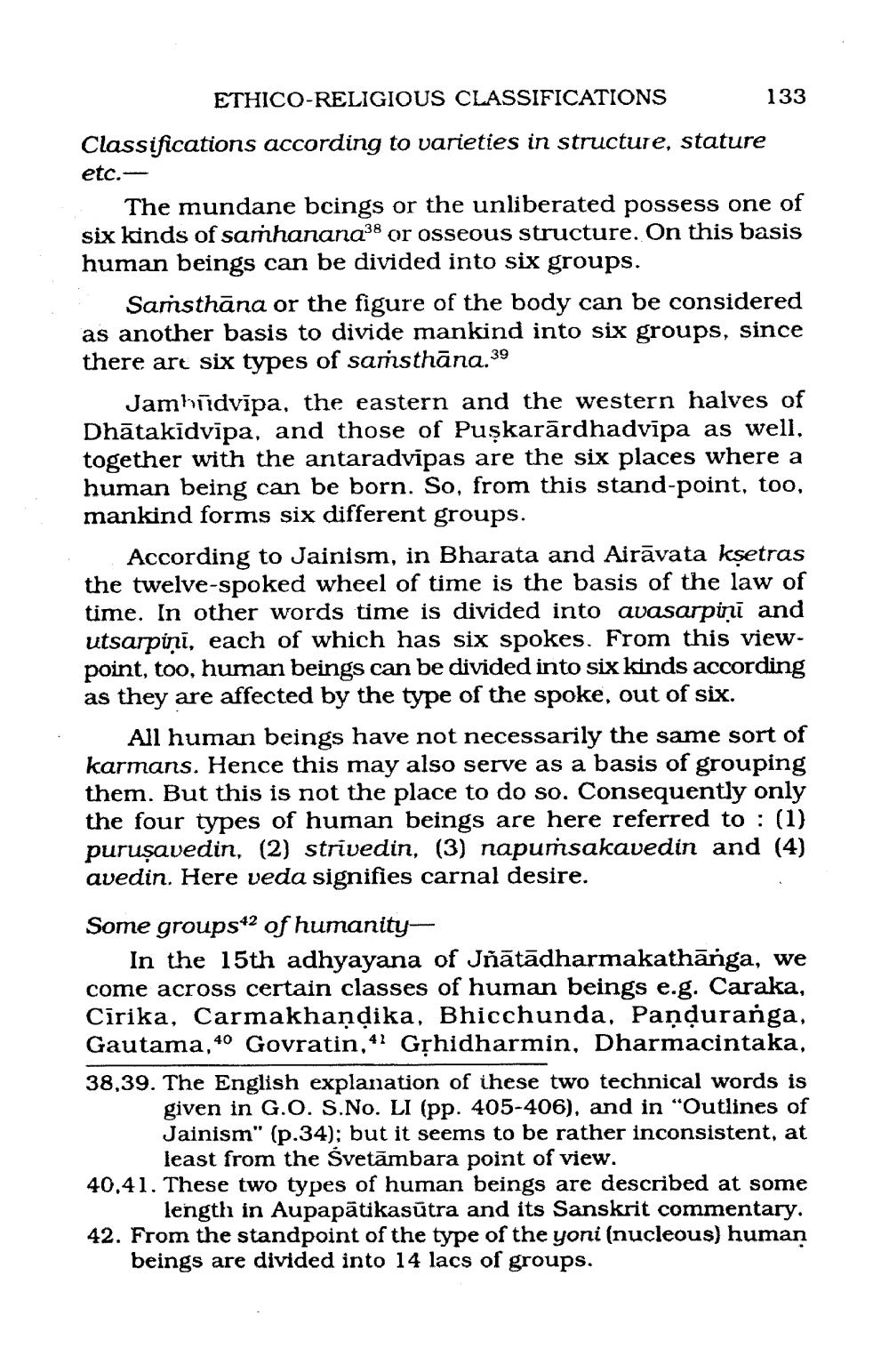________________
ETHICO-RELIGIOUS CLASSIFICATIONS
133 Classifications according to varieties in structure, stature etc.
The mundane bcings or the unliberated possess one of six kinds of samhanana38 or osseous structure. On this basis human beings can be divided into six groups.
Samsthāna or the figure of the body can be considered as another basis to divide mankind into six groups, since there are six types of samsthāna. 39
Jamhüdvīpa, the eastern and the western halves of Dhātakidvipa, and those of Puşkarārdhadvīpa as well, together with the antaradvipas are the six places where a human being can be born. So, from this stand-point, too, mankind forms six different groups.
According to Jainism, in Bharata and Airāvata ksetras the twelve-spoked wheel of time is the basis of the law of time. In other words time is divided into avasarpiņi and utsarpiņi, each of which has six spokes. From this viewpoint, too, human beings can be divided into six kinds according as they are affected by the type of the spoke, out of six.
All human beings have not necessarily the same sort of karmans. Hence this may also serve as a basis of grouping them. But this is not the place to do so. Consequently only the four types of human beings are here referred to : (1) puruṣavedin, (2) strivedin, (3) napuṁsakavedin and (4) avedin. Here veda signifies carnal desire.
Some groups*2 of humanity
In the 15th adhyayana of Jñātādharmakathānga, we come across certain classes of human beings e.g. Caraka, Cirika, Carmakhandika, Bhicchunda, Panduranga, Gautama, 40 Govratin,“? Gșhidharmin, Dharmacintaka, 38,39. The English explanation of these two technical words is
given in G.O. S.No. LI (pp. 405-406), and in "Outlines of Jainism" (p.34); but it seems to be rather inconsistent, at
least from the Svetāmbara point of view. 40.41. These two types of human beings are described at some
length in Aupapātikasūtra and its Sanskrit commentary. 42. From the standpoint of the type of the yoni (nucleous) human
beings are divided into 14 lacs of groups.




